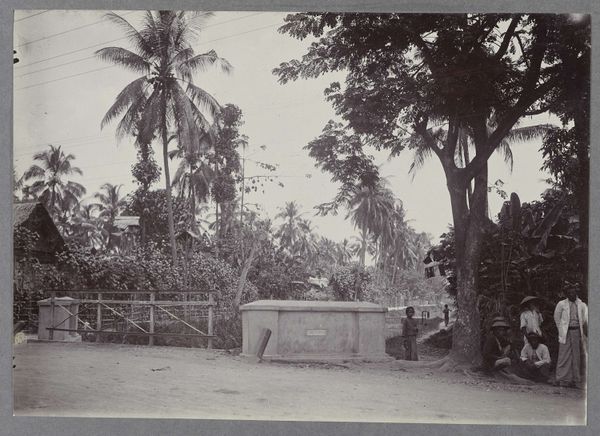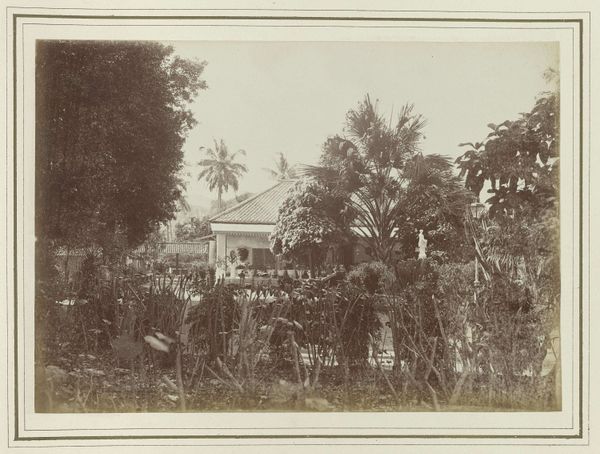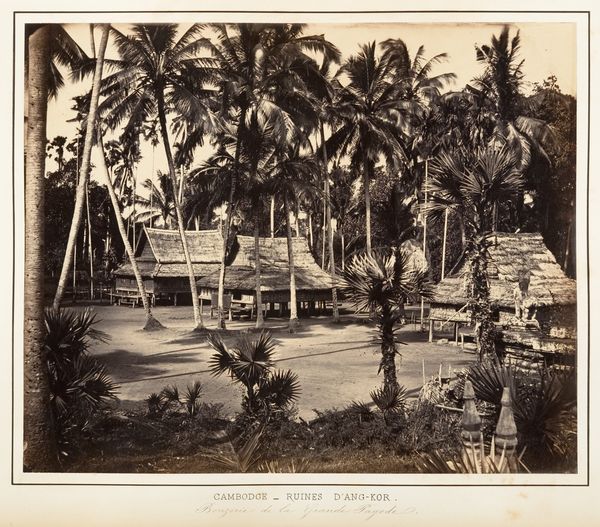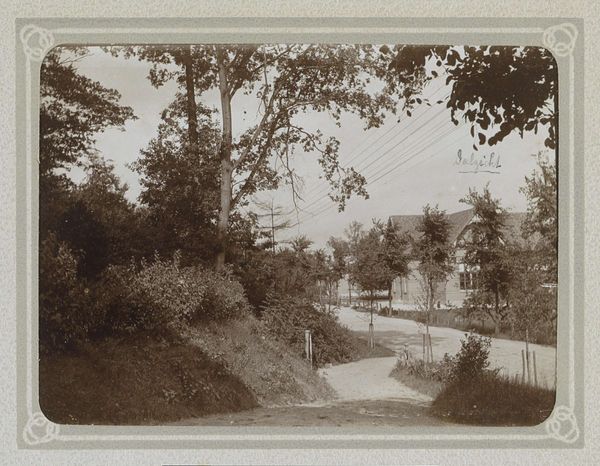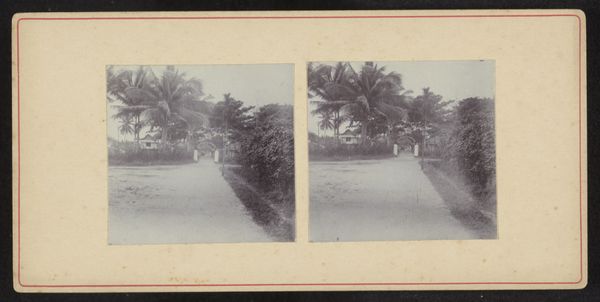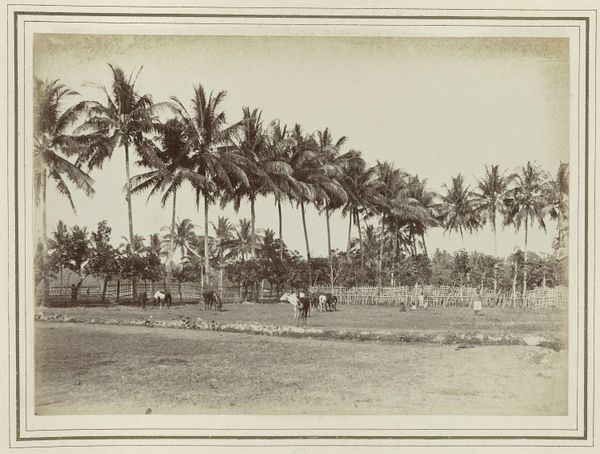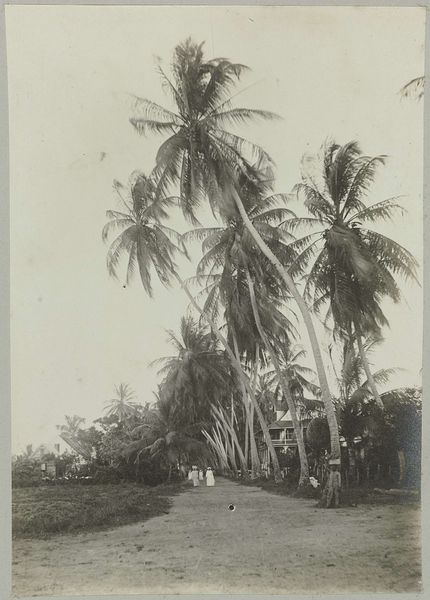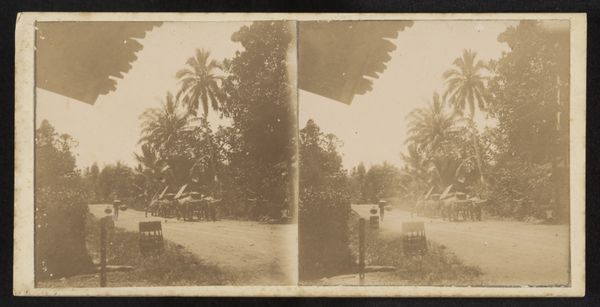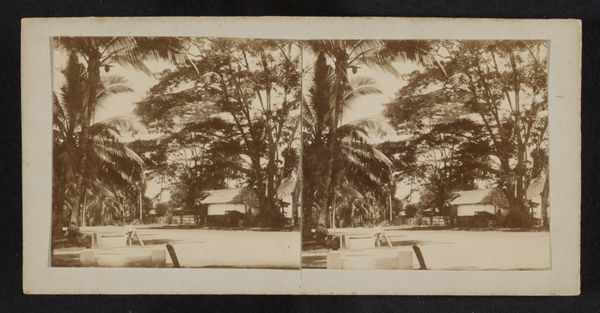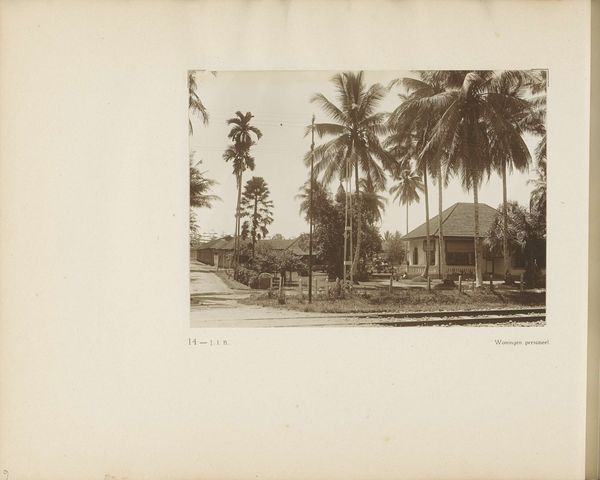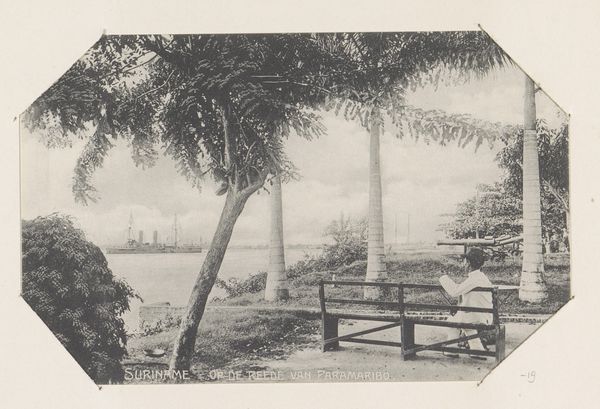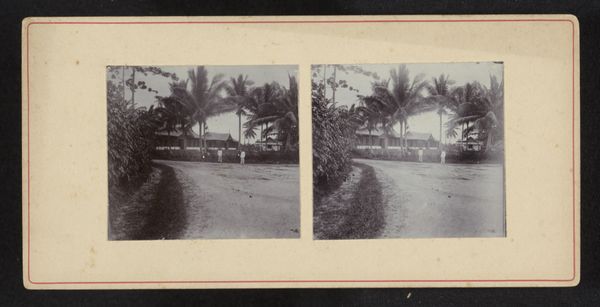
photography, gelatin-silver-print
#
pictorialism
#
landscape
#
photography
#
historical photography
#
gelatin-silver-print
Dimensions: height 150 mm, width 210 mm
Copyright: Rijks Museum: Open Domain
Curator: Let's turn our attention to this photograph, "Brug over water," taken in 1886 by Kassian Céphas. It's a gelatin silver print currently housed here at the Rijksmuseum, a captivating example of early landscape photography, with pictorialist elements. Editor: You know, it feels like stepping into a memory. Everything is hushed, still...almost dreamlike. The soft tones make it seem like a secret, held just beyond the reach of the modern world. Curator: Exactly! Céphas, as a court photographer in Yogyakarta, was documenting the changing landscapes and architecture under colonial rule. This bridge becomes a symbol, connecting two worlds, maybe, or two eras. The gelatin silver process allowed for incredible detail. Editor: It's fascinating how photography, initially intended as objective documentation, so quickly became a canvas for artistic expression. I mean, look at the almost painterly quality! The mist hanging in the trees feels intentionally placed, doesn't it? Those reflections shimmering just so. Is this 'straight photography', I wonder? Curator: Well, pictorialism valued aesthetic effect over stark realism. Céphas and others were deeply influenced by painting and actively manipulated the printmaking process to achieve that painterly softness and emotional depth that you see. His position gave him unusual access, as photography was heavily influenced by western practitioners. Editor: You can almost smell the humidity, can’t you? I'm transported. It feels so alive, this landscape...but tinged with an undeniable sense of distance. A melancholy kind of beauty. Like looking back at a chapter irrevocably closed. Curator: Perhaps. The construction of identity is inherent to historical photography. It's a frozen moment shaped by cultural assumptions and colonial perspectives. He frames an exotic world but invites us into it, under very strict pretenses. Editor: It reminds me to cherish these fragile moments, those in-between spaces that resist easy categorization. Like dawn or dusk, you know? It also feels strangely subversive; as an act of preservation it simultaneously underscores loss, doesn’t it? Curator: I appreciate that perspective. Thinking about the act of seeing, capturing, and archiving. Editor: A truly moving testament to a time and place, wouldn't you say?
Comments
No comments
Be the first to comment and join the conversation on the ultimate creative platform.
